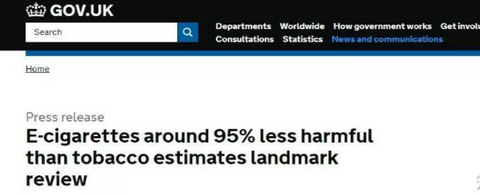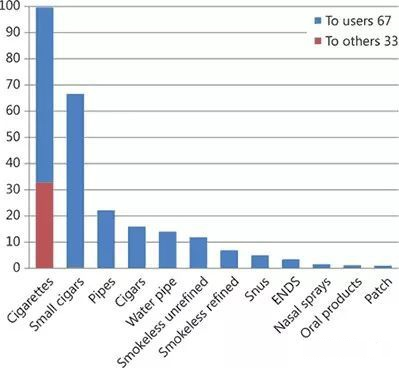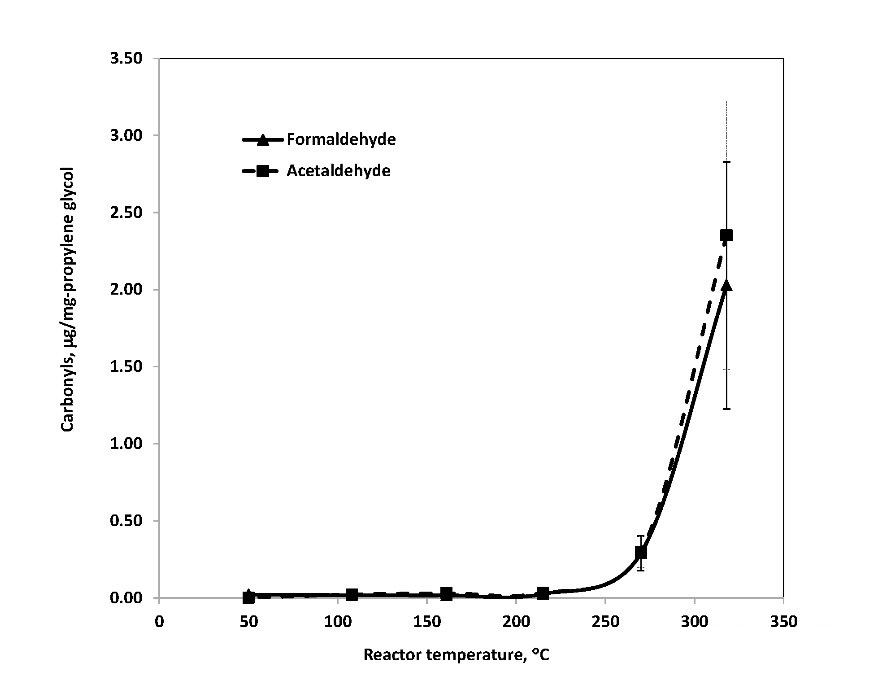MOTI PLANET
Postman
- Joined
- Aug 25, 2022
- Messages
- 161
Foreword:
In 2015, Public Health England (PHE) publicly announced that e-cigarettes are at least 95% less harmful than traditional cigarettes, which has to be said to be a booster for e-cigarette users. However, although the argument that "e-cigarettes are 7 times more poisonous than cigarettes" is popular in social media, and "harm reduction by 95%" has become a magic weapon for e-cigarettes, most e-cigarettes do not understand why it is safer and why It is 95%, not 94% or 96%. We’d be glad to take you to trace it back to the source.

1. Background
It is important to clarify the facts, rather than directly copy+paste such brainless information as "e-cigarettes are 7 times more poisonous than cigarettes" so that electronic cigarettes can better develop forward. Regardless of whether the national standard is restricted or not, and the attitudes and measures of relevant ministries and commissions, we e-cigarette users must have a clear understanding and independent judgment on the things we use, so as not to be easily led astray by different voices.
In 2015, Public Health England (PHE) publicly announced that e-cigarettes are at least 95% less harmful than traditional cigarettes, which has to be said to be a booster for e-cigarette smokers. However, although the argument that "e-cigarettes are 7 times more poisonous than cigarettes" is popular in the domestic self-media, and "harm reduction by 95%" has become a magic weapon for e-cigarettes, most e-cigarettes do not understand why it is safer and why it is 95%, not 94% or 96%?
2. What does this report say?
The report first pointed out that "e-cigarettes contain toxic substances, including small amounts of formaldehyde and acetaldehyde" and other substances, but "the content of these substances is much lower than that of traditional cigarettes."
It then goes on to explain the harm reduction gained from smoking compared to smoking and describes some of the advantages of using e-cigarettes over nicotine replacement therapy (NRT). "E-cigarettes provide nicotine delivery in a form that mimics smoking, have a socially acceptable, non-medical image, and enable users to retain their smoker identity without the risk of vaping".
"Thus, unlike NRT, especially if nicotine delivery can be improved to more closely mimic cigarettes, these products have the potential to be attractive and could challenge tobacco's position as the product of choice for nicotine users," the report authors added. "The option to switch to e-cigarettes as an alternative and safer source of nicotine, as a personal lifestyle choice rather than a medical service, has great potential for smokers who currently have difficulty accessing existing methods."
Subsequently, PHE released its report: "These conclusions are in line with the assessment of an international team of experts assessing the risk of smoking at less than 5 percent, and another international team who conducted a comprehensive review of the relevant literature and concluded that e- E-cigarette liquids can contain some of the toxic substances present in tobacco smoke but at much lower levels. The long-term health effects of e-cigarette use are unknown, but compared to cigarettes, e-cigarettes are likely to contain far fewer, if any, harmful to users or bystanders."
3. Where does the 95% less harmful come from?
To better understand the origin of the "at least 95% harm reduction" statement, we need to look at another study by an international panel of experts convened by the Independent Scientific Committee on Drugs (ISCD). The latter researchers "developed a multi-criteria decision analysis model that describes the relative importance of different types of harm associated with the use of nicotine-containing products".
They analyzed 12 kinds of products and determined 14 hazard standards, 7 of which constituted harm to the user, and the other 7 had the possibility of harm to the surrounding people. The investigators averaged injury ratings for all products for each standard using a score of 100 defined as the most harmful product under a particular standard and a score of zero defined as non-hazardous.
The result is as follows:

As mentioned above, an ENDS (e-cigarette category) score of less than 5 means that this type of product is only 5% of the risk of smoking. In other words, "E-cigarettes are at least 95% safer than cigarettes".
After reviewing the relevant scientific literature, PHE concluded that the risks associated with smoking are likely to be "very low" compared with those associated with smoking.
4. Health message about electronic cigarettes
To make sure its findings were accurate, PHE also looked at compounds in the vapor, particularly formaldehyde and acrolein.
The first study on these harmful substances was first mentioned in The Japan Times in 2014, according to which "during testing of various electronic cigarettes, one was responsible for 10 times higher formaldehyde emissions than tobacco cigarettes".
However, PHE has explained that these toxic emissions only occur when the e-liquid is overheated. Moreover, the above-mentioned Japanese studies have never been published in any academic journals.
According to experiments conducted by the California Department of Public Health (CDPH) in 2017, harmful substances such as formaldehyde and acetaldehyde will gradually be produced in large quantities when heated above 250 degrees.

A few months later, in January 2015, a similar study was published, according to which "when e-cigarettes were used at maximum power for 3 to 4 seconds, the rate of formaldehyde found in the aerosol was 5 times higher than that of tobacco to 15 times".
However, in response to this, PHE has officially explained: "These results were obtained by testing on a smoking machine and no one would have smoked for such a long time at such a power". In addition, when e-cigarette users feel thirsty, they instinctively exhale the vapor because of the unbearable taste, which cannot be detected by smoking machines. So while the presence of these toxic substances in the case of overheated e-liquids is undeniable, none of them were repeatedly inhaled.
These statements are corroborated by a study conducted by Dr. Konstantinos Farsalinos, a renowned anti-tobacco expert at the Onassis Cardiac Surgery Center in Athens and the University of Patras in Greece, and his researchers.
Dr. Farsalinos' report mentioned that none of the testers involved in the study were able to vape under the same conditions as a smoking machine. All were forced to spit out steam due to the effect of the smoke. Additionally, he said, levels of toxic compounds present in aerosols are "absent or negligible" under normal use.
Likewise, about acrolein, other scientists have demonstrated that "the levels of acrolein and crotonaldehyde in the urine of e-cigarette smokers are much lower than those of tobacco smokers".
NOTE: Vaporizers produce higher levels of formaldehyde than smoking only when used in harsh and impractical conditions. In normal use, the vapor produced by e-cigarettes contains "absent or negligible" toxic compounds.
Another 2015 study linked vaping to lung health problems. By locking test rats in a box and exposing them to e-cigarette aerosols, the team concluded that vaping can cause "inflammation and lung infections, and even cancer."
Once again, PHE pointed out some problems with the study.
NOTE: Free radicals are unstable and highly reactive molecules. Simply put, oxygen in the body is broken up into individual atoms, with mismatched electrons. The problem is that electrons work in pairs, so those sequestered (called free radicals) will seek out other electrons to form a pair with, a process that damages the building blocks of cells, DNA, and proteins. Free radicals are abundant in cigarette smoke and are known to cause various cancers, cardiovascular diseases, and skin aging.

That same year, another study revealed similar results. However, as PHE points out, "again, no comparison with smoking was made".
The majority of symptoms currently reported when using e-cigarettes are local irritation of the mouth and dry mouth. Regarding the respiratory tract, studies have shown that smokers with asthma improve their condition after using e-cigarettes. Another study found that using e-cigarettes had no significant effects on the human body after 1 year.
In 2015, Public Health England (PHE) publicly announced that e-cigarettes are at least 95% less harmful than traditional cigarettes, which has to be said to be a booster for e-cigarette users. However, although the argument that "e-cigarettes are 7 times more poisonous than cigarettes" is popular in social media, and "harm reduction by 95%" has become a magic weapon for e-cigarettes, most e-cigarettes do not understand why it is safer and why It is 95%, not 94% or 96%. We’d be glad to take you to trace it back to the source.

1. Background
It is important to clarify the facts, rather than directly copy+paste such brainless information as "e-cigarettes are 7 times more poisonous than cigarettes" so that electronic cigarettes can better develop forward. Regardless of whether the national standard is restricted or not, and the attitudes and measures of relevant ministries and commissions, we e-cigarette users must have a clear understanding and independent judgment on the things we use, so as not to be easily led astray by different voices.
In 2015, Public Health England (PHE) publicly announced that e-cigarettes are at least 95% less harmful than traditional cigarettes, which has to be said to be a booster for e-cigarette smokers. However, although the argument that "e-cigarettes are 7 times more poisonous than cigarettes" is popular in the domestic self-media, and "harm reduction by 95%" has become a magic weapon for e-cigarettes, most e-cigarettes do not understand why it is safer and why it is 95%, not 94% or 96%?
2. What does this report say?
The report first pointed out that "e-cigarettes contain toxic substances, including small amounts of formaldehyde and acetaldehyde" and other substances, but "the content of these substances is much lower than that of traditional cigarettes."
It then goes on to explain the harm reduction gained from smoking compared to smoking and describes some of the advantages of using e-cigarettes over nicotine replacement therapy (NRT). "E-cigarettes provide nicotine delivery in a form that mimics smoking, have a socially acceptable, non-medical image, and enable users to retain their smoker identity without the risk of vaping".
"Thus, unlike NRT, especially if nicotine delivery can be improved to more closely mimic cigarettes, these products have the potential to be attractive and could challenge tobacco's position as the product of choice for nicotine users," the report authors added. "The option to switch to e-cigarettes as an alternative and safer source of nicotine, as a personal lifestyle choice rather than a medical service, has great potential for smokers who currently have difficulty accessing existing methods."
Subsequently, PHE released its report: "These conclusions are in line with the assessment of an international team of experts assessing the risk of smoking at less than 5 percent, and another international team who conducted a comprehensive review of the relevant literature and concluded that e- E-cigarette liquids can contain some of the toxic substances present in tobacco smoke but at much lower levels. The long-term health effects of e-cigarette use are unknown, but compared to cigarettes, e-cigarettes are likely to contain far fewer, if any, harmful to users or bystanders."
3. Where does the 95% less harmful come from?
To better understand the origin of the "at least 95% harm reduction" statement, we need to look at another study by an international panel of experts convened by the Independent Scientific Committee on Drugs (ISCD). The latter researchers "developed a multi-criteria decision analysis model that describes the relative importance of different types of harm associated with the use of nicotine-containing products".
They analyzed 12 kinds of products and determined 14 hazard standards, 7 of which constituted harm to the user, and the other 7 had the possibility of harm to the surrounding people. The investigators averaged injury ratings for all products for each standard using a score of 100 defined as the most harmful product under a particular standard and a score of zero defined as non-hazardous.
The result is as follows:

As mentioned above, an ENDS (e-cigarette category) score of less than 5 means that this type of product is only 5% of the risk of smoking. In other words, "E-cigarettes are at least 95% safer than cigarettes".
After reviewing the relevant scientific literature, PHE concluded that the risks associated with smoking are likely to be "very low" compared with those associated with smoking.
4. Health message about electronic cigarettes
To make sure its findings were accurate, PHE also looked at compounds in the vapor, particularly formaldehyde and acrolein.
The first study on these harmful substances was first mentioned in The Japan Times in 2014, according to which "during testing of various electronic cigarettes, one was responsible for 10 times higher formaldehyde emissions than tobacco cigarettes".
However, PHE has explained that these toxic emissions only occur when the e-liquid is overheated. Moreover, the above-mentioned Japanese studies have never been published in any academic journals.
According to experiments conducted by the California Department of Public Health (CDPH) in 2017, harmful substances such as formaldehyde and acetaldehyde will gradually be produced in large quantities when heated above 250 degrees.

A few months later, in January 2015, a similar study was published, according to which "when e-cigarettes were used at maximum power for 3 to 4 seconds, the rate of formaldehyde found in the aerosol was 5 times higher than that of tobacco to 15 times".
However, in response to this, PHE has officially explained: "These results were obtained by testing on a smoking machine and no one would have smoked for such a long time at such a power". In addition, when e-cigarette users feel thirsty, they instinctively exhale the vapor because of the unbearable taste, which cannot be detected by smoking machines. So while the presence of these toxic substances in the case of overheated e-liquids is undeniable, none of them were repeatedly inhaled.
These statements are corroborated by a study conducted by Dr. Konstantinos Farsalinos, a renowned anti-tobacco expert at the Onassis Cardiac Surgery Center in Athens and the University of Patras in Greece, and his researchers.
Dr. Farsalinos' report mentioned that none of the testers involved in the study were able to vape under the same conditions as a smoking machine. All were forced to spit out steam due to the effect of the smoke. Additionally, he said, levels of toxic compounds present in aerosols are "absent or negligible" under normal use.
Likewise, about acrolein, other scientists have demonstrated that "the levels of acrolein and crotonaldehyde in the urine of e-cigarette smokers are much lower than those of tobacco smokers".
NOTE: Vaporizers produce higher levels of formaldehyde than smoking only when used in harsh and impractical conditions. In normal use, the vapor produced by e-cigarettes contains "absent or negligible" toxic compounds.
Another 2015 study linked vaping to lung health problems. By locking test rats in a box and exposing them to e-cigarette aerosols, the team concluded that vaping can cause "inflammation and lung infections, and even cancer."
Once again, PHE pointed out some problems with the study.
- E-cigarettes should only be considered as a tool to reduce the risks of smoking. Therefore, any study that aims to highlight problems caused by vaping must compare them to problems caused by smoking, which this study did not do.
- The group of mice exposed to e-cigarette vapor was "more stressed" than the control group, and stress is known to affect "bacterial and viral responses." Therefore, the results of this study are again considered unreliable.
- In addition, mice are also more prone to "repetitive nicotine intoxication" given their metabolic limitations. The UK Department of Health explained that the recipients' accelerated weight loss, reduced immunity and shortened lifespan "are more likely to be caused by chronic stress and high levels of nicotine intoxication than by exposure to free radicals", especially according to research on free radicals. content, the aerosol content of e-cigarettes is "1000 times lower than that of tobacco cigarettes".
NOTE: Free radicals are unstable and highly reactive molecules. Simply put, oxygen in the body is broken up into individual atoms, with mismatched electrons. The problem is that electrons work in pairs, so those sequestered (called free radicals) will seek out other electrons to form a pair with, a process that damages the building blocks of cells, DNA, and proteins. Free radicals are abundant in cigarette smoke and are known to cause various cancers, cardiovascular diseases, and skin aging.

That same year, another study revealed similar results. However, as PHE points out, "again, no comparison with smoking was made".
The majority of symptoms currently reported when using e-cigarettes are local irritation of the mouth and dry mouth. Regarding the respiratory tract, studies have shown that smokers with asthma improve their condition after using e-cigarettes. Another study found that using e-cigarettes had no significant effects on the human body after 1 year.







